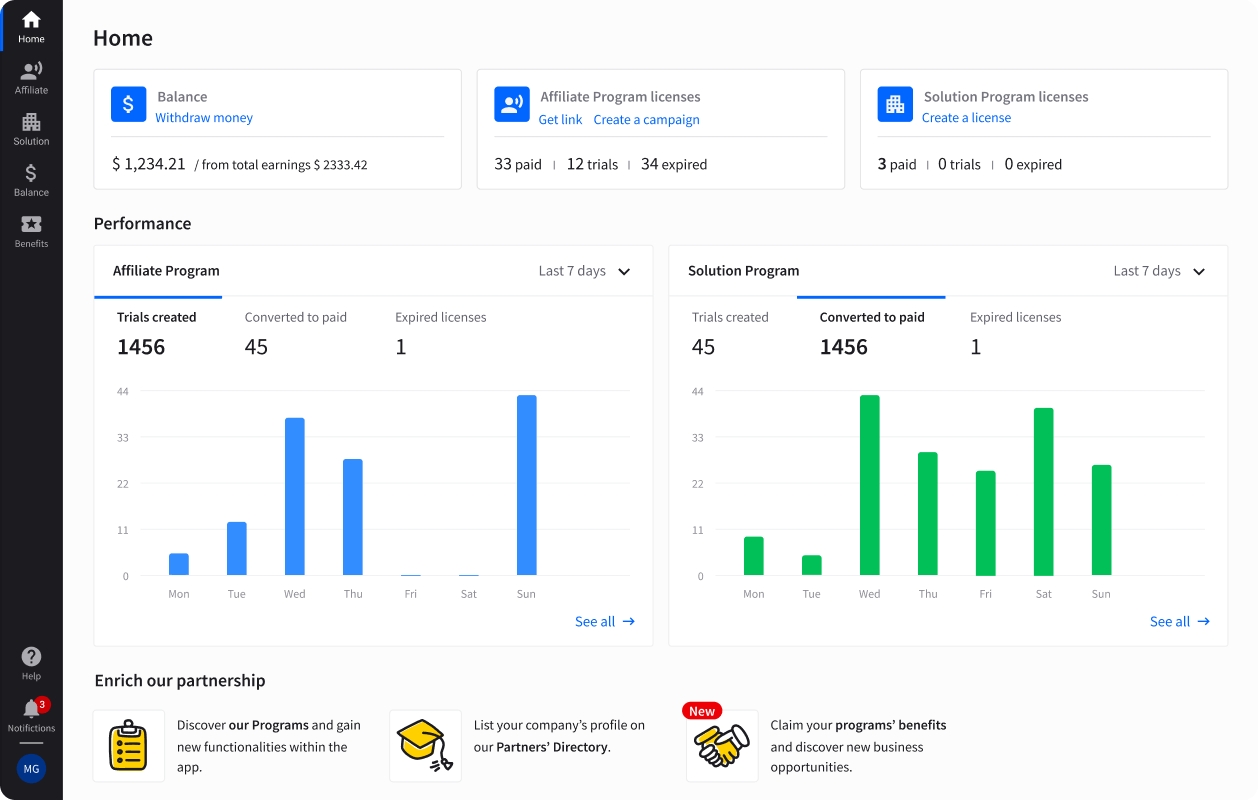Showing top 0 results 0 results found
Showing top 0 results 0 results found

Launching a product is not the easiest task. You need to handle the technical side of things, PR, marketing - all at the same time. Small bugs and fixes are piling too, and all of these combined can make your head spin round.
(Remember my post about 6 things you should ask yourself before a product launch? Yes, there’s a lot to take in).
What if you could make it at least a little bit easier for yourself?
This is where the idea of a soft launch comes in handy.
Let’s check what it is and how to prepare for it as a product manager or a marketer in today’s blog post.
A soft launch is all about gradual growth
For a start, let’s define what a soft launch is, and what it isn’t.
A soft launch is a practice when instead of releasing a full-fledged version of your product, you deliver it in stages. This way, you can be sure that you account for the inevitable mishaps and leave yourself some space to fix and reconsider things.
This strategy is perfect for new products that haven’t reached their product-market fit yet. You can always take a few steps back or pivot your product entirely.
What’s important here and what you really should launch in the first iteration are any core features that:
a) will help the users see how your product can solve their problem(s),
b) will be elements of your unique selling proposition.
One could argue that soft launching is even more crucial if you have a huge customer base and tons of following.
By gradually rolling the changes or features out, you’re - once again - allowing for the unpredictable blunders and can get real-life feedback from your customers. It will help you apply fixes and fine-tune things before the next stage of the launch.
Soft launch vs. hard launch
So, what are the advantages of a soft launch?
One of them is being able to iterate your product based on your customers’ feedback. You can put the incomplete version of your product out to the world, and then add another features or elements of it one by one.
Just a warning here: don’t forget that a soft launch is not a good way to just simply test your product idea, and you should always precede it with research and testing.
A soft launch helps you create a more sustainable and failure-resistant product over time. Instead of relying on spikes of user growth, you can focus on strategies for slower, gradual buildup. These can serve as a great resource for moments when your product expansion stalls.
One more and perhaps most obvious advantage of using soft launch is its cost-effectiveness. You don’t need to spend a large amount of money all at once. Instead, you can invest smaller sums as you start getting some traction and retaining users.

And are there any pros to a big and audacious product launch?
One of them is that it usually works great if you want to get more publicity as press events tend to attract a larger audience. So if it’s press buzz you’re after, get ready for a hard launch.
Plus, once you release a ready-to-use product, copying it will be much more difficult. If you’re in an extremely competitive industry and you know that your competitors are right behind your back, it makes sense to release a complete version as well. This way, you’ll gain a competitive advantage and avoid giving your legal department a bit of a headache.
Another pro of launching big is having a larger control over your marketing strategy and its execution. You plan it all at once in advance, precisely choosing your targeting and tone, and then put it all to action.
You can also think about differently about the whole concept way of soft and hard launches. One could approach them not as opposite methods of releasing a product but as two stages of the same process. Keep in mind that it could mean that the second always comes after the first or that the soft release is simply a preparation for a hard launch.
Buffer’s soft launch approach
One of the companies that used the soft launch to release their product was Buffer. To be accurate, this wasn’t entirely their choice - this is how Leo Widrich, one of the co-founders describes their first weeks in an interview with John Doherty:
So I thought, “Okay. Well, I’ll e-mail TechCrunch, a bunch of other news sites and just say, ‘Hello, we are Buffer. We are doing this cool thing. You can post better to Twitter,'” and nothing, no response, no one was interested. I was like, “What’s going on? No one’s writing about us.” I tried again. “Let’s write to Mashable. Let’s write to the next one. Let’s write to this site and this.” Nothing went back. I said, “Okay. Let’s go to the smaller blogs and write to the smaller blogs.” Nothing, no one was interested in even writing a single line about what we did.
So, instead of getting publicity for the product, Leo focused on creating Buffer’s blog where he shared valuable content aimed at social media managers. Each post gradually gained more and more shares and signups, and as Buffer team and their brand awareness grew, they’ve been able to go from a simple Twitter scheduling tool to a social media management platform.
The lesson here is: create value first and learn more about your users before you’ll start aiming for a hard launch.
Soft launch marketing strategies
Now that we know what soft launch is, and what are its advantages, let’s see what techniques could you employ to slowly and gradually release your product. As you may be able to see, they’re all about connecting with the current and potential users. There’s very little of traditionally seen marketing to them.
Become our partner
Build your business on excellent customer service products

Beta test your product
Start by releasing a beta or a minimum viable version of your product. It will allow you to give access to it to a relatively small group of people and work on it based on their feedback and usage data.
Once again, make sure that the very first version of the product already has a core feature(s) built in. This way, you won’t also risk losing users after they sign up because they could find crucial elements that differentiate your product from your competitors’ or has been hinted in your unique selling proposition.
Build your crew
Your next step would be to identify a group of active users who could be your product ambassadors among the communities you’re trying to target. If you’ve tried beta testing before, your testers could become the ambassadors. This group will be crucial in promoting your product to larger communities and in getting initial feedback. Be as transparent to them as possible and share your product progress openly.
You’re invited
Instead of creating an all-in version of your product where anyone visiting your landing page can sign up, narrow access to it by allowing only those users who got an invite. These could be either internal invitation where existing users allow others to come in or the invitations requested on your website. This technique can also help you avoid the trap of low-quality conversions, and form a group of the product ambassadors I’ve mentioned above.
Grow with us
Find new revenue streams for your business.

Over to you
What’s your approach to launching a product? Have you soft launched it before? Let’s discuss it in the comments below.


